A humpback whale watching is a big draw for coastal areas of Central America, especially in the popular tourist destination of Costa Rica.
The most popular whales to watch are the majestic Humpback Whales and, if you time it right, you can plan your next visit to Costa Rica during the Humpback Whale migration season.
Warm waters are a great attraction for whales, mainly in the shore area of Costa Rica. As this stop place is part of their long migration route, they will probably show up fairly punctually.
If you are a whale watching enthusiast or just would like a new experience, then you have come to the right place.
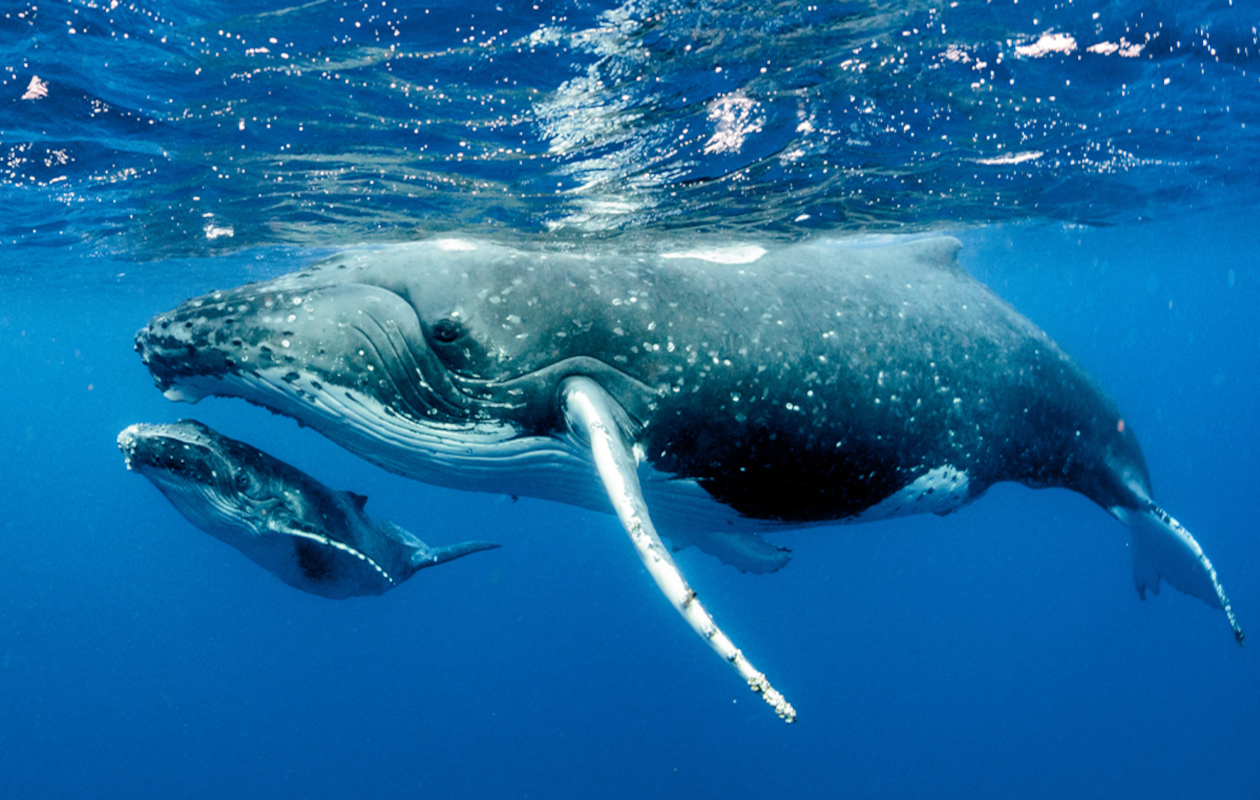
Humpback whales migration: The Amazing Journey
North Pacific humpback whales migration have the longest route. They travel from the cold, icy arctic waters where they feed to the warmer ocean waters that stretch from the coast of Northern California to Central America.
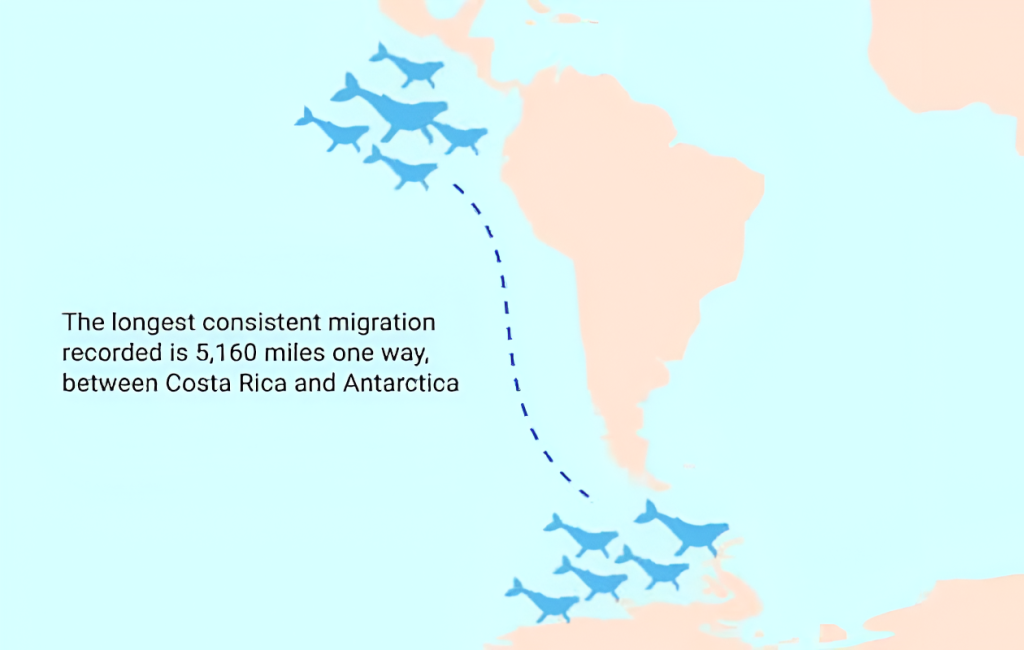
The Southern population is bigger, with about 6000 whales. They travel thousands and thousands of miles from Antarctica to the warmer waters of Central America.
- A vestigial behaviour from when smaller ocean basins meant closer feeding and wintering areas.
- The optimization of energy budgets by wintering in warm waters.
- Increased calf (offspring) growth and survivorship in warm protected waters.
- Avoidance of killer whale (Orcinus orca) predation at low latitudes.
Humpback Whales Migration Path
The Southern population of humpback whales, numbering around 6,000 individuals, undertakes an impressive migration from the icy waters of Antarctica to the warmer waters of Central America. This migration is part of their long journey which includes traveling thousands of miles.
The reasons behind this migration are diverse, including optimization of energy budgets, increased calf growth in warmer waters, and avoidance of predation.
To provide a clearer picture of these migration patterns, the following chart illustrates detailed satellite tracking data for six humpback whales tagged off Ecuador during their 2013 southern migration. This data includes the number of location fixes and tracking periods for each whale, showing how their movements are monitored during their journey.
Tireless travelers and voices of the ocean
Every year, thousands of humpback whales travel some 4,800 km from Alaska to warmer waters like Hawaii or Central America. They do so without eating, living only on their fat reserves, and during that time a calf can grow more than 40 kg per day.
Thanks to photographic records like those from the Happy Whale platform, it is now possible to identify more than 80% of migrating individuals. Furthermore, their songs are not simple sounds: they follow complex patterns, almost like a language, that allows them to communicate and possibly learn from each other.
These details reveal how intelligent and resilient these giants of the ocean are.
Table 1. Satellite Tracking Data for Humpback Whales Tagged off Ecuador during the 2013 Southern Migration
Félix, F., & Guzmán, H. M. (2014). “Satellite tracking and sighting data analyses of southeast Pacific humpback whales (Megaptera novaeangliae): Is the migratory route coastal or oceanic?” Aquatic Mammals, 40(4), 329-340.
The table summarizes the satellite tracking of six humpback whales that were tagged off the coast of Ecuador in 2013. It shows how many locations were recorded and how long each was tracked:
| Tag ID | Type | Number of Locations (Argos Classes) | Tracking Period |
|---|---|---|---|
| 1 | A | 150 (B, 200) | 07/01/2013 – 08/31/2013 |
| 2 | A | 120 (B, 200) | 07/05/2013 – 08/30/2013 |
| 3 | A | 135 (B, 200) | 07/15/2013 – 09/20/2013 |
| 4 | MC | 160 (B, 200) | 06/01/2013 – 09/15/2013 |
| 5 | MC | 140 (B, 200) | 06/10/2013 – 10/01/2013 |
| 6 | MC | 155 (B, 200) | 06/25/2013 – 09/20/2013 |
Legend:
- A: Adult
- MC: Adult Female with Calf
- Argos Classes: B (Good) and 200 (Excellent)
- Tracking Period: Dates during which tracking occurred
Reference: Félix, F., & Guzmán, H. M. (2014). “Satellite tracking and sighting data analyses of southeast Pacific humpback whales (Megaptera novaeangliae): Is the migratory route coastal or oceanic?” Aquatic Mammals, 40(4), 329-340.
The Great Migration of the Humpback Whale-Video
Why do humpback whales really migrate?
Feeding
At first glance, it seems that the main causes of the humpback whales long migrations of whales would be feeding or reproduction. However, according to new discoveries, scientists say the answer to why whales actually migrate is not so obvious.
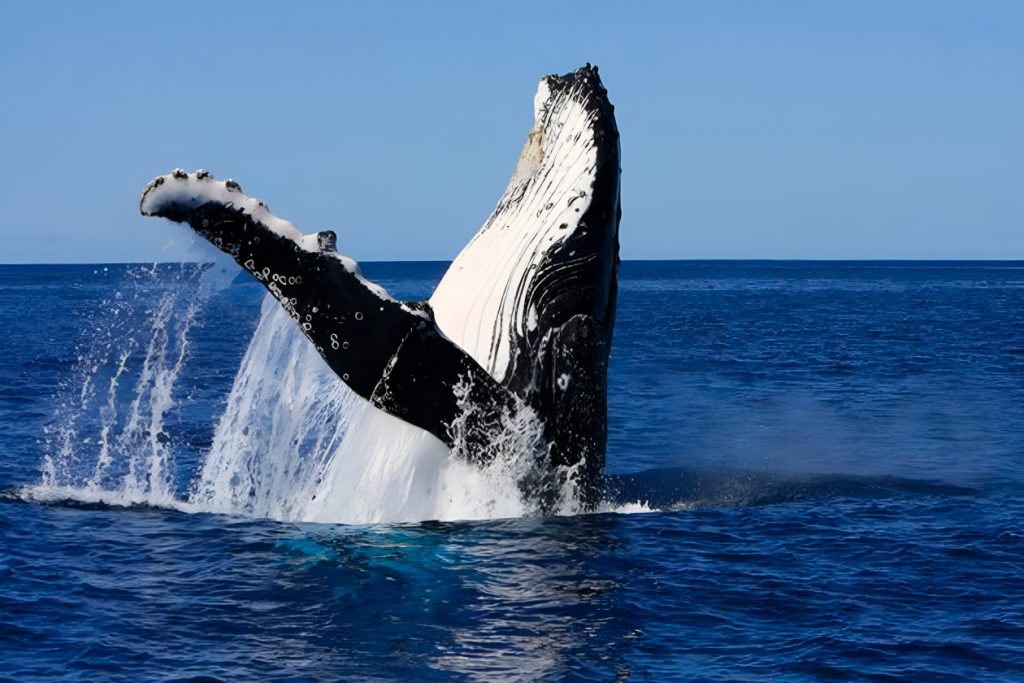
The change of skin
The new discoveries point to the fact that the most important reason for the migration of the whales would be the shedding of their skin.
Researchers have documented voyages of up to 25,000 km for gray whales and 18,000 km for humpback whales.
The scientific name for humpback whales is Megaptera novaeangliae.
Observers do not find the definitive reason that makes the whales migrate to high latitudes in search of food, since that time is precisely the moment when more resources exist in low latitudes.
The whales would be migrating to lower latitudes to give birth to their young, since they estimate that there would be fewer predators in those places. The truth of the matter is that the experts do not agree on this point.
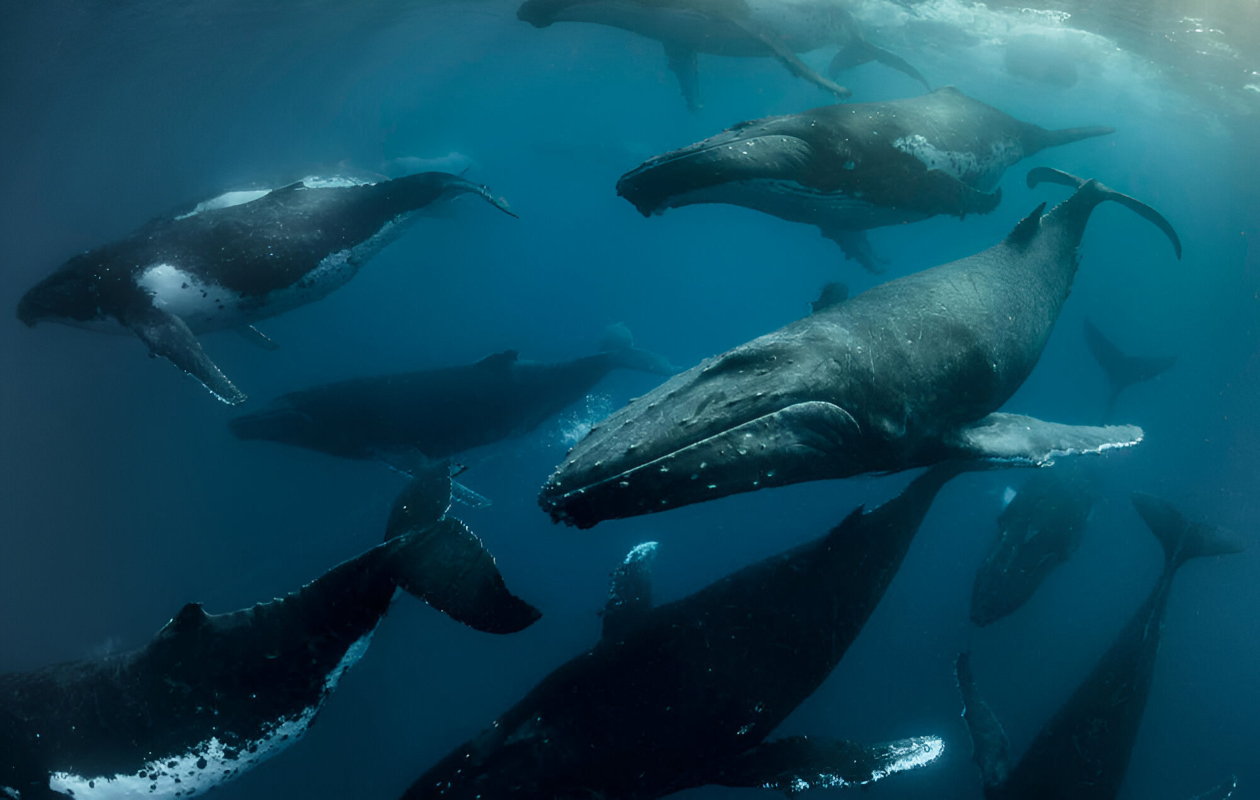
A recent study consisting of photographic monitoring of a group of whales shows that these mammals, like humans, require a maintenance process of the skin.
Whales have as a kind of first line of protection against bacteria and diseases, which would be their skin, which must be renewed every certain period of time.
The study showed that whales cannot perform the change of epidermis in cold waters, because they must maintain their body temperature and the blood flow is withdrawn towards the interior of their body in said waters.
Therefore, when the whales migrate to warmer waters, the blood flow of the epidermis normalizes, allowing the skin to renew itself, since this process implies that the cells are metabolically active.
New questions about migration
However, this new discovery in turn brings to light other questions that need to be answered.
One of these questions is how this change of skin of the whales affects the marine ecosystem, and how those species that do not participate in a migration carry out this renewal process.
If you want to know more about humpback whale migration, there are some very good and very well documented articles to read. You can visit whales.org or check out this report on NCBI. There is a lot of interesting information about migration theories and scientific facts about whales.
When is the best time for whale watching in Costa Rica?
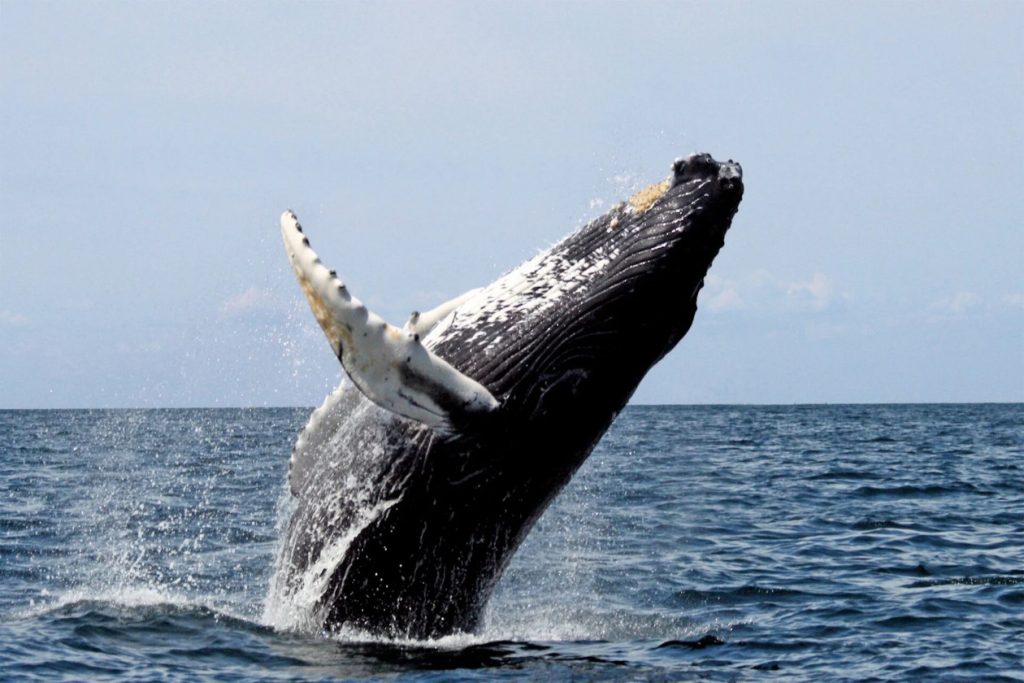
It may interest you: Why Humpback Whales Breach
Since the whales like the warmer waters of the sub-tropic zone off of Central America and the North American coast, you can nearly enjoy whale watching year-round. However, August, September and October are the best months in the year to see them.
During this time the Humpbacks are extremely active when they are swimming as this is also their breeding season.
Where can you see whales in Costa Rica?
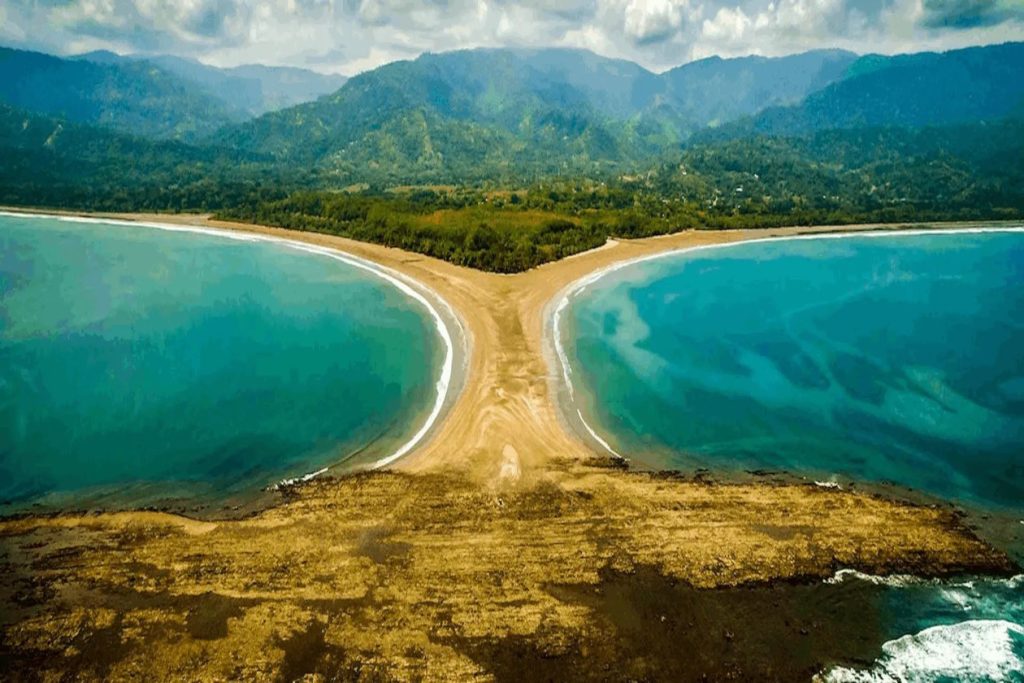
Among the best places that we can name are Caño Island, Drake Bay and the Marino Ballena National Park.
These are for us the best places to watch humpback whales not only in Costa Rica, but also in the all world.
According to National Geographic, the Marino Ballena National Park is one of the 10 best places to see whales.
A unique experience in life
With thousands of these majestic creatures occupying the same stretch of ocean can be breathtaking for the many whale watchers. There truly is nothing on earth that compares to sudden surprise when a 50-foot creature breaches the surface of the water and smacks back down with a rush.
If you have not seen it yet in person, you really need to. The adrenaline rush will virtually take your breath away the very first time you see and feel it.
The waters off of the Pacific coast from Central America all the way up to Northern California are the second most important to the population of the Humpback Whales with Hawaii. If you are looking for someplace to go on your vacation, you really need to check out Costa Rica.
Come and see the Humpback whales !
